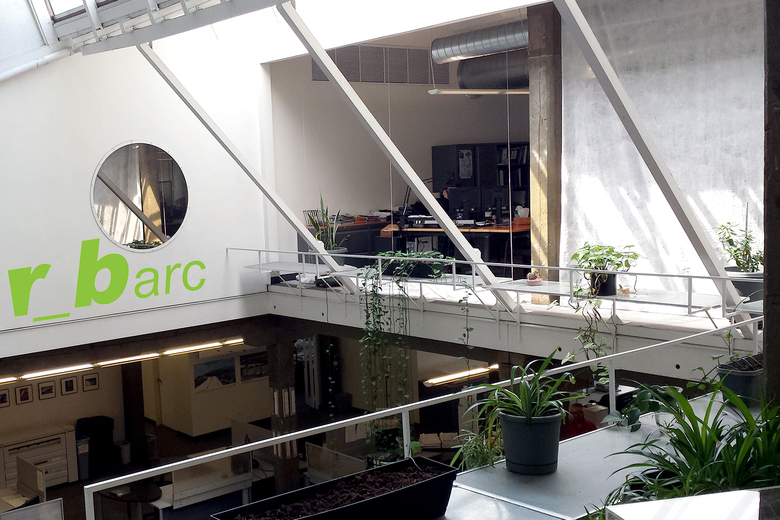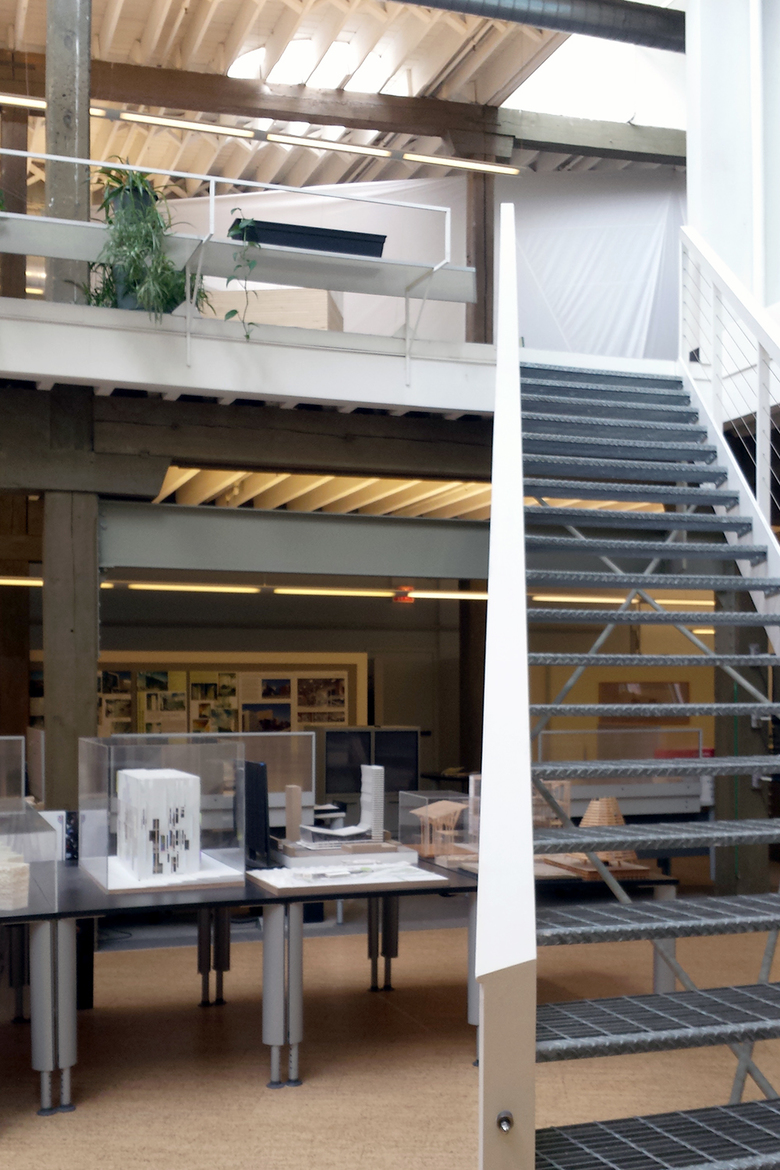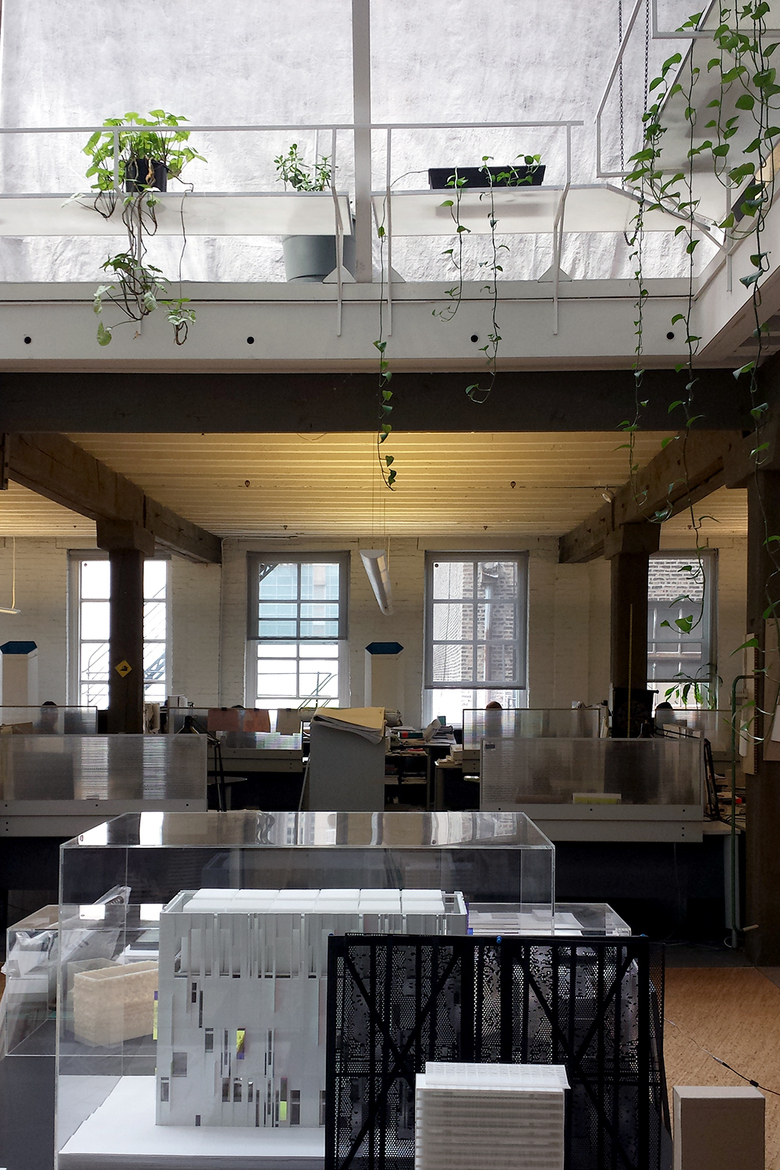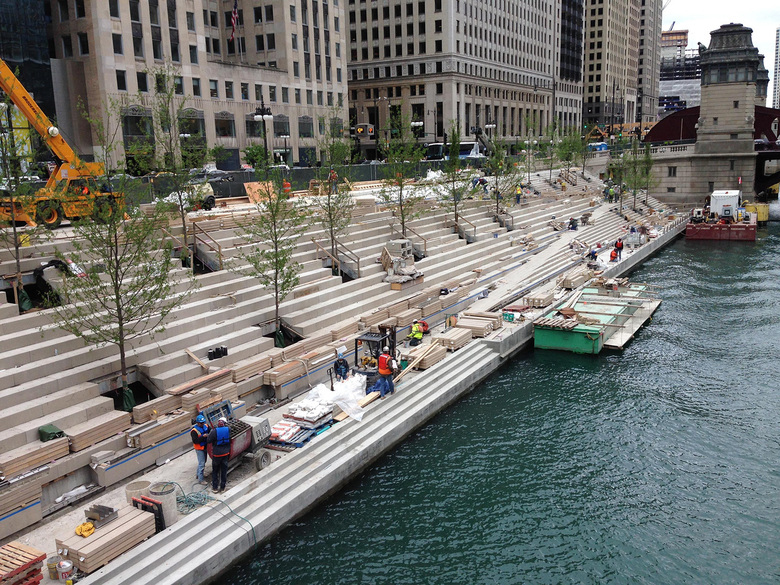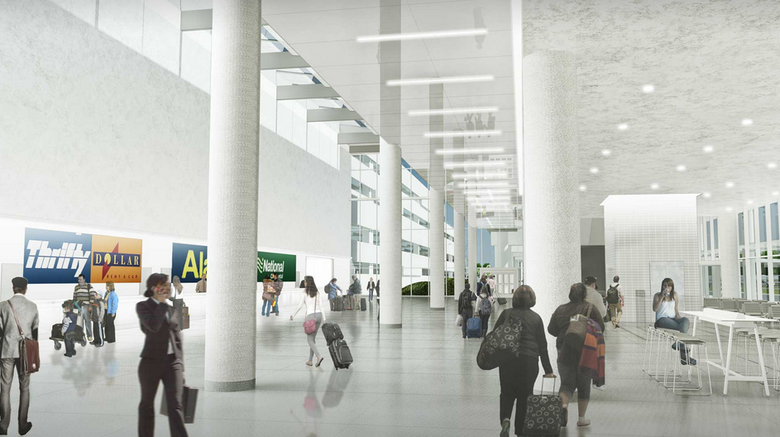Studio Visit: Ross Barney Architects
John Hill
25. May 2015
Photo: John Hill/World-Architects
Memorial Day Weekend saw the opening of a two-block stretch of the Chicago Riverwalk, one of the most anticipated projects in the midwestern city. The riverwalk is designed by Ross Barney Architects (with Sasaki Associates), which World-Architects recently visited.
Having worked in Chicago for about a decade after graduating from architecture school in the mid 1990s, I was familiar with the buildings of Carol Ross Barney – the schools, civic buildings, libraries and other buildings focused squarely on the public realm. What I did not know – what I learned when I stopped by the office of Ross Barney Architects (r_barc) on a warm spring day – was that we grew up in the same Chicago suburb, Northbrook. Most people don’t know it, but they know Northbrook. It was the home of director John Hughes, who used it as the model of the fictional town of Shermer that populated his movies, like Pretty in Pink and Ferris Bueller's Day Off, which were often filmed there. So Northbrook is one of the things Carol Ross Barney and I have in common. Another is an appreciation of Harry Weese, whose old office r_barc occupies.
Photo: John Hill/World-Architects
Harry Weese is a name familiar to Chicagoans (thanks to documentaries like this one), but not to as many people in other parts of the U.S. or overseas. He designed a number of notable buildings before his death in 1998, many of them in his native Chicago, but his most widely known work is outside of the city – the Washington METRO, which was given the Twenty-five Year Award from the American Institute of Architects last year. In and around Chicago’s Loop, he preserved notable buildings like Louis Sullivan’s Auditorium Building, he renovated formerly industrial buildings, such as those in Printer's Row, and he designed a variety of new buildings, including the triangular Metropolitan Correctional Center, the circular Seventeenth Church of Christ, Scientist, and the boxy Time-Life Building. These concrete, stone, and Cor-ten steel buildings, respectively, clearly show Weese’s diversity in form and material, something that Carol Ross Barney shares.
Photo: John Hill/World-Architects
One of r_barc's most awarded buildings is the James I Swenson Civil Engineering Building at the University of Duluth, Minnesota, which dramatically incorporates Cor-ten steel, inspired by the local mining industry. The firm has designed two stations for the city’s famous “L,” most recently the Cermak-McCormick Place Station (highlighted below), whose tubular canopy recalls the D.C. METRO in form, if not material. In suburban Evanston, the JRC Synagogue was designed as a "precious wooden box" that happens to sit at the same intersection as a senior center they designed about five years earlier with wooden louvers facing the street. These examples show that the buildings of r_barc have an obvious diversity of form and material (Carol Ross Barney told me that she is interested in seeing what a material is capable of, rather than designing particular forms) that, if not inspired by Weese's architecture, at least finds a parallel in his buildings.
Photo: John Hill/World-Architects
The current office of r_barc/former office of Harry Weese is located on the top two floors of a building in the city’s River North neighborhood. It is a light-filled, multi story space that is also quite idiosyncratic, at least based on one story Carol told me. Weese was a heavy drinker, often starting over lunch each day. This would often lead to him sleeping it off in the office, which he would do in a loft above the area with the kitchen and the bathrooms. Right above the loft was – and still is – a tiny skylight that would help Weese wake up in the morning. But the most dramatic skylights are located over the double-height space and diagonal stair that links the two floors. This is the heart of the office, where light bathes the studio, plants grow over the guardrail, and models of r_barc's numerous buildings are on display.
Photo: John Hill/World-Architects
Most pronounced about the work of Carol Ross Barney is her strong belief in the power of architecture in making the city a better place to live. As mentioned, her firm is squarely dedicated to public work – schools, libraries, civic buildings, religious buildings, train stations, riverwalks, and even chiller plants. This is admirable, for it is not easy to only work on public buildings, in Chicago or elsewhere. The need for a good client – a prerequisite for any project, if you ask any architect – is especially pronounced in public work, which often involves more, and more diverse, stakeholders with a say in what happens. Projects can sometimes suffer from a lack of ambition, but most of r_barc's buildings benefit from strong clients who also believe that, in the firm's words, "happiness and well-being are intrinsically linked to the quality of the environment."
Photo: John Hill/World-Architects
R_barc's commitment to what they describe as "making extraordinary spaces, no matter what the scope or scale, through inventive and integrated design," is evident in three recently completed/in-progress projects, highlighted below with words and images supplied by the firm. Visit the profile of Ross Barney Architects to see more projects by the 25-person firm headed by Carol Ross Barney with principals Laura Saviano, Eric Martin, and Roxanne Henry.
Chicago Riverwalk
A rendering of the River Theater (Image: Courtesy of Ross Barney Architects)
Ross Barney Architects is designing the next phase of the Riverwalk that will enable uninterrupted public waterfront activity along the Chicago River’s south bank, from Lake Michigan west to the confluence of the river’s north, south, and main branches.
Working with Sasaki Associates and a host of specialty consultants, six new blocks will be added to the two completed Riverwalk sections that Ross Barney Architects designed. Working within a restrictive 25 foot build out area, the new Riverwalk links a series of distinct civic spaces or “rooms,” each named for its unique program. These include the Marina Plaza; Cove; River Theater; Swimming Hole; Jetty; and Boardwalk.
![]() More
More
A photo of the River Theater shortly before the Memorial Day opening (Image: Courtesy of Ross Barney Architects)
CTA Cermak-McCormick Station
The city's newest CTA station opened February 2015 (Photo: Kate Joyce)
The Cermak – McCormick Place station serves the country’s largest convention center and a stretch of the Green Line that has been without a station since 1978. The innovative design, a tube covering the platform and tracks, is the result of creatively working within the constraints: The station is to be built quickly, with a modest budget, without suspension of service, and of durable, low-maintenance materials. This portion of the Green Line runs within city blocks on a narrow right-of-way. Tracks could also not be moved and, as a result, narrow platforms would have to serve trains in an area with an anticipated growth in population and transit use. In addition, the client, the City of Chicago Department of Transportation, wanted a “gateway” treatment for this station that is anticipated to serve a high number of first-time visitors to Chicago.
Collaborative Partner: TY Lin International
![]() More
More
The platform sits below a canopy of polycarbonate and perforated stainless steel (Photo: Kate Joyce)
O'Hare Consolidated Car Rental Facility
Aerial rendering of CONRAC (Image: Courtesy of Ross Barney Architects)
The consolidated car rental facility (CONRAC) and parking structure is a multimodal transportation center combining airline, light transit, rail, bus, shuttle as well as both rental and privately owned vehicles at one location to facilitate travel within the Chicago region and to destinations throughout the world. Three floors are dedicated to rental car operations, three floors to public parking, and additional floors of public parking in the future. At more than 3 million gross square feet, the facility will become one of the largest structures in the Midwest. The functional and visual focal point of the building is the Customer Service Center and the Airport Transit System station. The design combines these two operations into one space that creates another “terminal” for the airport.
Collaborative Partner: TranSystems
![]() More
More
Rendering of CONRAC concourse (Image: Courtesy of Ross Barney Architects)
Related articles
-
Architects Reimagine the Chicago River
on 9/20/17
-
An 'Ideas Lab' for Chicago's Rivers
on 3/16/17
-
Lucas Museum of Narrative Art Approved
on 10/30/15
-
Polis Station
on 10/6/15
